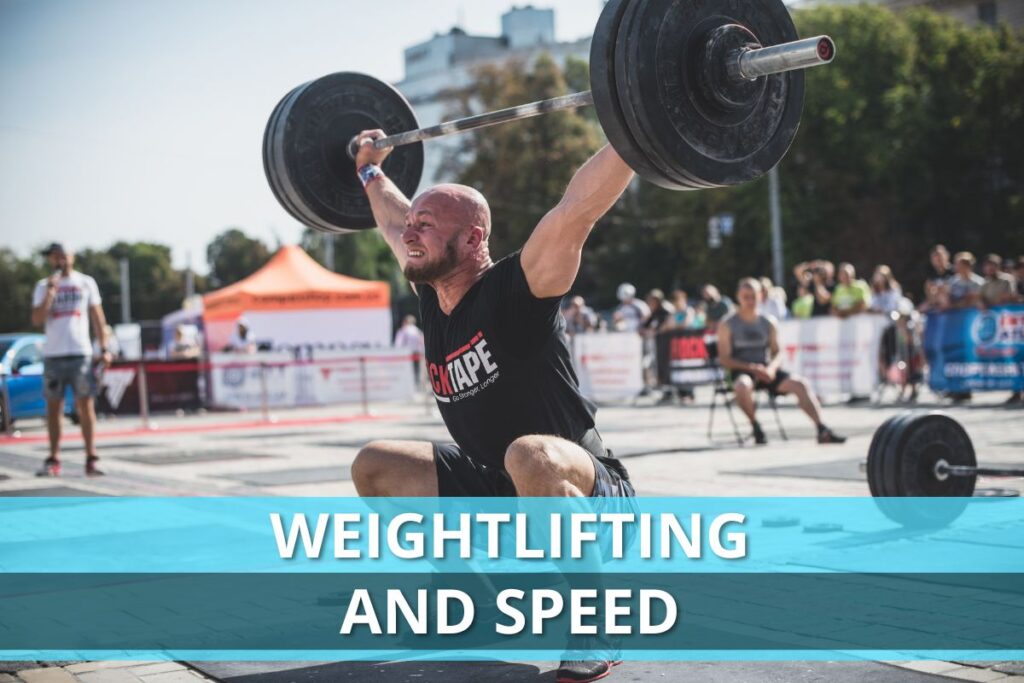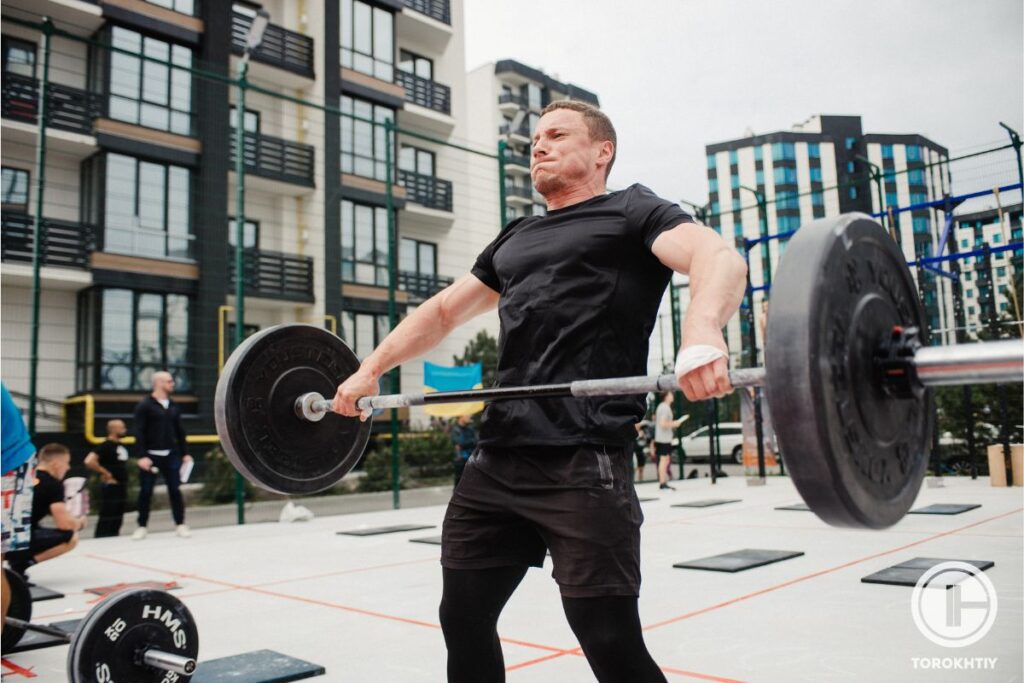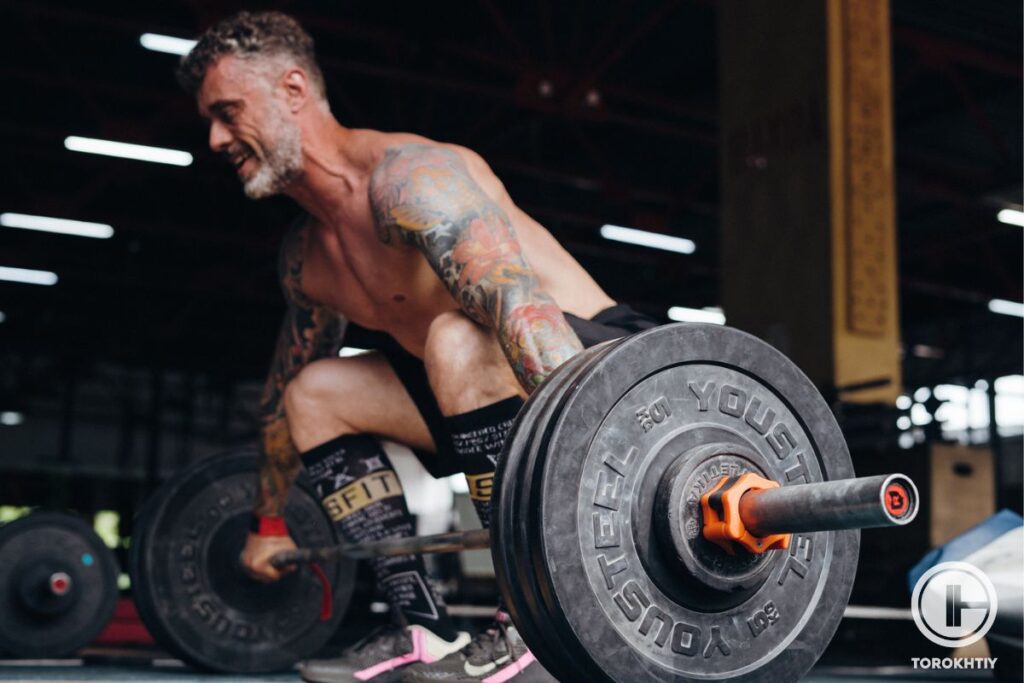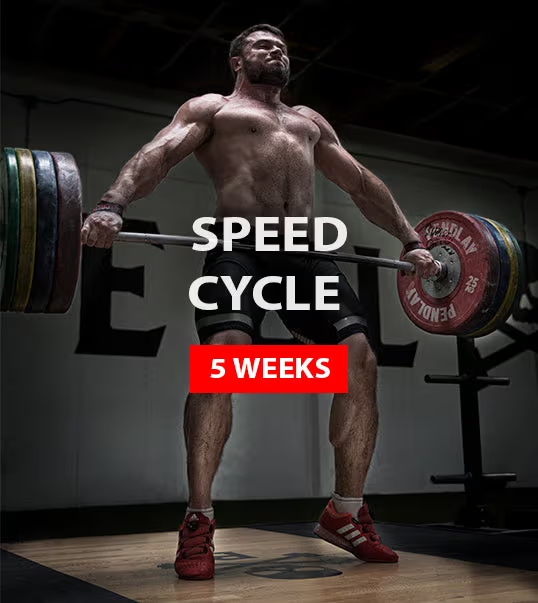Weightlifting and Speed
Author:
Unlock your full potential by engaging with our experts and community! Have questions about your fitness journey or looking for expert advice on weightlifting techniques? Don’t hesitate — leave a comment below and Sergii Putsov will provide a personalized answer and insights to help you reach your goals.
Torokhtiy is reader-supported. Some links are affiliate links, and we may earn a commission at no extra cost to you. See our disclosure page for details.
In those days when weightlifting could be seen in black and white photographs only, it was considered a total power sport. But once speed became the most important component of the exercises, weightlifting’s emphasis became a duality of speed-strength.

The modern weightlifter is also different from the athletes of the 50s. Heavy and slow men gave way to athletic, mobile and explosive ones. A modern weightlifter often resembles a disc thrower or sprinter.
Looking at the direction in which modern weightlifting is developing, it seems to me that one of the ways to improve the results will be by increasing the speed of the exercises. Therefore, it is extremely important to understand how to develop speed and to observe a balance between the ratio of force and speed.
First, you need to determine the type of speed that a weightlifter needs. The movement speed can be divided into three forms: the reaction time to an external stimulus, the individual movement’s frequency and a single movement speed.
You may like it:
- Detailed Olympic Weightlifting Program For Beginners
- 12-Week Weightlifting Program For Women (Detailed Example)
- Create Your Olympic Weightlifting Program (Examples Included)
Since the snatch and clean & jerk are not cyclical and do not start at a signal, it is quite obvious that the athlete must have a high speed of single movement or rather, the ability to move quickly in high muscular tension conditions.
The relative height of the lift and the barbell speed decreases in proportion to the increase in its weight. Thus, one of the most important tasks is to achieve the required movement speed as well as a sufficient lift height.
A fast athlete is able to more effectively transfer his power to a moving barbell. All other things being equal, fast athletes generate more power and apply it to the bar for a longer period of time.
Weightlifters should be able to quickly move their body during the exercise. For example, in the second snatch pull, the athlete practically straightens his legs, then bends them in the knee-up phase, straightens them up in the power position and, at the time of leaving the barbell, bends them again. All of this happens in a split second.
The faster the switch from one phase to another occurs, the greater muscle strength is developed by an athlete in each separate phase. There is a high correlation between jump height and weightlifting results, especially in snatch.

It is known that the implementation of any exercise is associated with the ability of the athlete to fully utilize all forces, including inertia. In weightlifting it is very important as the athlete applies his strength to the bar and in particular, this occurs during the switch from the power position phase to the phase of dropping under the bar.
At the time of the final acceleration phase and full straightening, the athlete moves vertically with great speed. After that, he needs to stop moving upward to be able to start dropping. At this moment the kinetic energy of the body moving upwards is transferred to the bar. Studies show that medium weight categories’ top athletes can generate effort in power position greater than 200 kg.
A little bit of physics for a better understanding. When the force applied to the bar is greater than its weight, the vertical speed increases. If the force is equal to its weight, the speed after the power position will not change. If the force is less than the weight of the bar, the athlete will not be able to accelerate the bar.
The speed of dropping under the bar is of great importance. When the athlete’s body exceeds the freefall acceleration while dropping into the squat, the inertia force contributes to the the barbell lifting.
Since the inertia force is equal to the mass and acceleration product, this force will increase together with the dropping speed, which, in turn, increases movement efficiency. Thus, the movement speed in weightlifting depends on internal and external driving forces.
The bar speed in the snatch reaches 2-2.2 m/s, and in the clean and clean & jerk reaches 1.6-1.8 m/s. But improving it is not that easy. According to scientific data, jumping results are improved in normal children from ages 7 to 17; for those who train to improve jumps, it is possible up to the age of 20.

Professional athletes can improve jumps up to age 22. At the same time, strength growth continues for a longer period of time, according to numerous studies up to 35 – 40 years.
Unevenness in the development of strength and speed affects the results growth in the snatch and clean & jerk. The result dynamics in the snatch, where speed is of great importance, decreases significantly with age. A similar situation, but to a lesser extent, is observed in the clean & jerk.
It is extremely important to take this into account when training weightlifters. It is necessary to pay maximum attention to the speed and explosive qualities development at the initial training stage. In this case, strength trainings with heavy loads are not recommended to young athletes.
A number of studies show that intense power loads on the arms and shoulder muscles have a negative impact on the snatch and clean & jerk technique development. And as opposed to this: with relatively weak arms and shoulder muscles, the technique assimilation by beginners is notably facilitated.
To develop proper technique, it is important to strengthen the legs and torso muscles, which are key muscles in speed-strength exercises. It should be kept in mind that the ability to quickly perform a movement depends not only on the level of speed development, but also on a number of other qualities: dynamic strength, agility, flexibility and ability to concentrate.
That is why many national teams use volleyball and table tennis in their training process. When I was in the junior team, there were even team table tennis championships and all the guys played it very well indeed. Volleyball was a favorite game in the transitional period at the recovery camp.
In order to develop speed, you need to use the optimal load in competitive exercises. For the development of speed: 55 – 70% for the development of speed-power qualities: 75 – 90%.
Variations of jumps with weight and with a barbell are the best way to develop a special speed. These exercises must always be present in the athlete’s training program.
Follow us!

Free!
Get a 2-week Weightlifting Program as a bonus for the subscription to kickstart your training plan!

Free!
An optimal state for the central nervous system is a prerequisite for speed training. That is why most jump and speed exercises should be performed at the beginning of the lesson, not at the end. The same rule applies to the implementation of complex coordination exercises.
Therefore, beginners perform jumps in the warm-up part of the lesson. It is advisable to periodically force athletes to compete in jumps in order to encourage them to develop explosive power. It is also important to use different and variable speed and coordination exercises.
The rest period between the speed exercises’ sets should be sufficient so that the speed of the next approach is not reduced.
Proper dosage is most important. Speed exercises should be performed frequently and at maximum speed, but with a small number of repetitions: 1 – 6 times.
High muscle tone can interfere with speed manifestation, because an increase in muscle tone prevents their relaxation. Various studies show that athletes who are too keen on strength exercises have an increased muscle tone of large muscle groups.
Unfortunately, there are very few scientific works devoted to the importance of muscle relaxation in weightlifting. One of the best methods is myofascial release and rolling, which can be used before and after workouts. Muscle relaxation should be an important part of the training process.
In some foreign sports schools there are even well-established slogans and banners on the walls. For example: “Remember that in sports those are successful who know how to relax,” and “Relaxation is not the result, it is the freedom of movement.”
To improve speed, the athlete should improve:
- The speed of a single movement;
- The possibility of switching from one movement to another;
- The ability to develop maximum muscle tension in minimum time;
- The ability of volitional muscle relaxation.
This approach is proposed in my program SPEED, which is specially designed for weightlifters and functional fitness athletes taking into account their unique abilities, needs and body. The main objective of this training program is to increase their speed abilities in order to improve the competitive exercises performance – snatch and clean & jerk.
Why Trust Us?
With over 20 years in Olympic weightlifting, strength training, nutrition coaching, and general fitness our team does its best to provide the audience with ultimate support and meet the needs and requirements of advanced athletes and professional lifters, as well as people who strive to open new opportunities and develop their physical capabilities with us.
By trusting the recommendations of our certified experts in coaching, nutrition, and sports training programming, as well as scientific consultants, and physiotherapists, we provide you with thorough, well-considered, and scientifically proven content. All the information given in the articles concerning workout programming, separate exercises, and athletic performance, in general, is based on verified data.
The product testing process is described in more detail here.
Author: Sergii Putsov
Head of Sport Science, PhD
Best Results: Snatch – 165 kg,
C&J – 200 kg
Sergii Putsov, Ph.D., is a former professional weightlifter and National team member, achieving multiple medals in the 94 kg weight category at national competitions. With a Master’s degree in “Olympic & Professional Sport Training” and a Sport Science Ph.D. from the International Olympic Academy, Greece, Sergii now leads as the Head of Sport Science. He specializes in designing training programs, writing insightful blog articles, providing live commentary at international weightlifting events, and conducting educational seminars worldwide alongside Olympic weightlifting expert Oleksiy Torokhtiy.




Still have questions after reading our article? Unlock your full potential by engaging with our experts and community! Don’t hesitate — leave a comment below and Sergii Putsov will provide a personalized answer and insights to help you reach your goals.